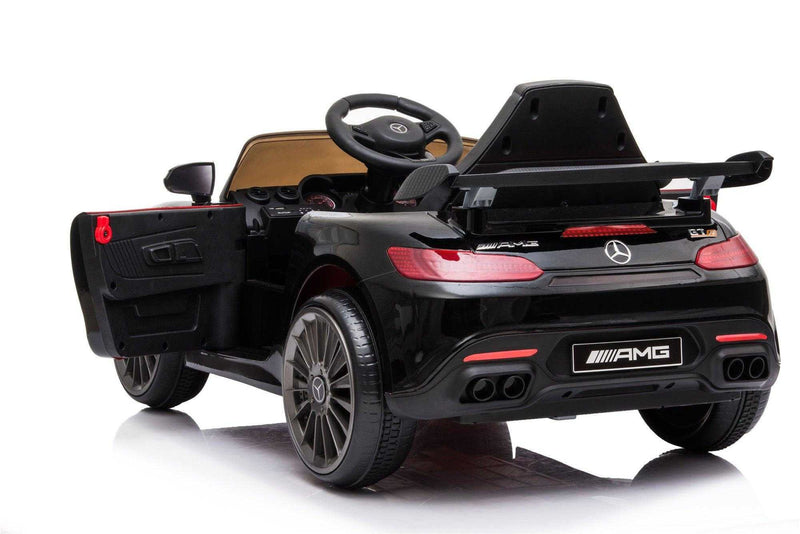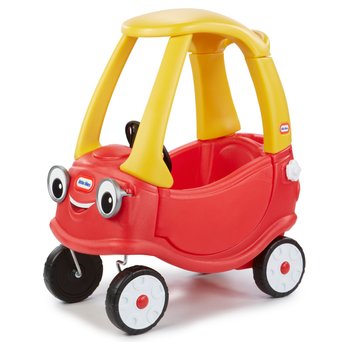Knowing the battery life and the life span of an electric kid's car is crucial to make sure that your child has an enjoyable and safe journey. Here's everything you must be aware of: Type of battery -
Most electric ride-on cars for children use rechargeable batteries, usually lithium-ion or lead-acid batteries. Lithium-ion battery have a longer life span and quicker charging times compared to lead acid batteries.
Capacity of Battery
The capacity of a battery is measured either in amps-hours or watts. Batteries with a higher capacity provide a longer playing time before needing to recharge.
Run Time -
The time of a car's runtime is the length of time that a vehicle can run continuously on a single battery charge. This can depend on factors including battery capacity along with motor speed, conditions and weight of the rider.
For electric vehicles typically, the run time is 30 minutes up to 2 hours with the use of a single battery. However, batteries with higher capacity might have longer runtimes.
Time to Charge
The charging time is how long it takes to fully recharge the battery after it has run out of fuel. The charging time can differ based on the battery capacity, charger specs, and charging method.
In general, the charging time for electric vehicles is between 8 to 12 hours. Some models might offer faster charging times, especially equipped with lithium-ion batteries.
Battery safety and longevity depend on charging the battery according to the manufacturer's guidelines. Undercharging or overcharging batteries could have an adverse effect on their performance and lifespan.
Charging Methods Charging Method
Electric ride-on vehicles are usually equipped with a charger that plugs into an ordinary household outlet. Certain models provide rapid charging or come with an intelligent charger that monitors and regulates the speed at which the battery is charged.
Make sure that the charging port and connectors can be used with the charger supplied by the ride-on vehicle to avoid damage to the battery or the electrical system.
Batteries Additional
Some electric ride-on cars may offer the option to purchase extra batteries or spare batteries to allow for extended playing time. Extra batteries allow you to replace batteries that are exhausted with fully charged batteries, which can reduce downtime.
Knowing the battery's charge time of a kid's car will help ensure that both you and your child enjoy uninterrupted, fun time as well as exciting adventures. Continuously charging the battery and following appropriate charging guidelines will increase the battery's life and performance. Follow the recommended kids ride on cars for blog recommendations including kids electric cars, digger ride, toy car for car, electric two seater cars, childrens electric ride on, 2 seater electric cars, a toy car, electric ride along car, remote control childrens car, electric ride on cars and more. .

What Is The Difference Between Indoor And Outdoors Use Of Car Models For Children?
The specifications of models designed for outdoor and indoor use are different. These models differ in their designs. from indoor Use Cars The Indoor Use Cars
Dimension and weight The cars that are made for indoor usage tend to be lighter, smaller and easier to maneuver through tight spaces, such as hallways, living rooms or playrooms. They are compact enough to maneuver around narrow spaces and tight corners without damaging furniture or walls.
Low Ground Clearance Indoor-use cars have a lower ground clearance so they don't become stuck or caught by obstacles like rugs, thresholds or carpets. This permits smooth, uninterrupted movement on indoor surfaces.
Smooth WheelsIndoor-use cars' wheels are typically made from smooth materials, like plastic or rubber for an even traction on surfaces with smooth surfaces, such as tile or laminate flooring. The wheels are made for indoor use in order to minimize the sound and also protect surfaces from scratching.
The limited speed of cars used to be used indoors usually have reduced maximum speeds in order to provide that they are safe and controlled in restricted spaces. This can prevent accidents or collisions which could occur due to furniture, wall or any other obstruction located inside.
Outdoor Use Cars -
Built to Last - Vehicles made to be used outdoors are constructed with durable materials such as strong plastic or steel to stand up to rough handling and outdoor elements such as sunlight, moisture and temperature variations. They are resistant to damage caused by outdoor elements.
Higher Ground Clearance - Outdoor use cars have higher ground clearance to navigate uneven terrain, bumps, or obstacles found in the outdoors. This lets the vehicle navigate over rough terrains without damage or a snag.
Traction Tires-The tires on cars made for outdoor use typically feature treads that help improve traction and grip on uneven or slick surfaces. This provides stability and control while driving on outdoor terrain that prevents sliding, skidding, or sliding.
Weather Resistant: Cars designed for outdoor use often feature weather-resistant features like sealed electronics or casings that are waterproof. They can also make use of rust-resistant material to prevent damage caused by water. They can withstand water, rain, or puddles, while retaining their performance.
Outdoor cars are typically quicker to take advantage of the wide open spaces, and longer distances that are encountered in the outdoors. This may provide an exciting and adventurous riding experience for children who are exploring the outdoors.
These design features and characteristics will help parents choose the ideal car for their kids to meet their requirements for use and the surrounding. Read the top rated read this about Lamborghini kids car for website recommendations including toy toy cars, pedal car, pedal car, toy toy cars, electric two seater cars, toy a car, car for toy, toy with car, two seater childrens electric cars, race car toy car and more. .

What Should I Consider Before Purchasing An Electric Car For My Kid? Pros And Cons?
There are many things to think about before buying an electric vehicle for your child. Here are some considerations to take into consideration along with details on the dimensions cost, prices, pros or pros and.
When choosing an electric car for your child, think about the size and the age of your child. For children who are smaller or younger small and lightweight models may be preferred. However older or larger kids may need cars with more room to accommodate them.
Size and Weight of the Car Size and Weight of the Car
The electric models for children's cars are available in a variety of sizes. From tiny to large-scale replicas, they're all available. Think about the weight and size of the car relative to your child's age, size and power, and the available space to store and playing.
Price Band Price Range
Electric children's cars are available in a broad variety of prices based on aspects like size, features and brand. Prices of micro-sized models range between $50 and $200 in comparison to larger-scale replicas can cost up to $800.
Pros and cons -
Pros -
Entertainment - Electric kid's cars provide hours of entertainment and imaginative fun for children and allow them to experience the thrill of owning their own vehicle.
Motor Skill Development. Driving an electric vehicle can aid children to develop spatial awareness, coordination and fine motor skill.
Electric cars encourage physical activity as well as outdoor play. They encourage exercise and exploration.
Realistic Features- Many electric children's cars come with realistic features like working headlights and horn sounds. They also support MP3 players, which improves the overall experience.
Cons
Cost - The most high-end electronic children's vehicles, particularly replicas that are licensed from the most well-known car manufacturers are expensive.
Battery life - Electric vehicles rely on rechargeable battery power that can only last a brief time or require frequent recharging.
Safety Concerns: Electric vehicles have a myriad of safety risks including accidents or falls, as well as entrapment if they are not operated by an adult and in a responsible way.
Assembly and Maintenance A few electric vehicles require assembly upon arrival, in addition to regular maintenance such cleaning, battery care and sometimes repairs or replacements of parts.
Accessories and Features
Take into consideration the features and accessories available on the electric car for kids, which include working headlights and horn sounds. Also, consider whether the car comes with a parental remote control or seat belts. Select a car that is compatible with your child’s interests and tastes.
The best electric kid's car will depend, in final analysis, on your child's age and their size, as well as their interest and also your budget. Do your research to compare models, read reviews and consider the pros and cons before making your decision. See the recommended JCB ride on digger kidscars.co.uk news for more examples including ride on toy, childs car toy, electric ride on cars, toy and car, car on ride, kids electric cars, riding digger, ride of car, kids electric cars, two seater electric cars and more. .
